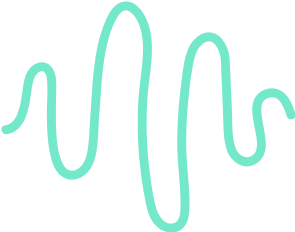Customer Meeting Minutes Template
.svg)
Sales
.svg)
Meeting Information
Meeting Title: [Project/Meeting Name]
Date: [Date]
Time: [Start Time] - [End Time]
Location: [Location/Video Conference Link]
Client Name: [Client's Name]
Company Representative(s): [Name(s)]
Attendees: [List of all participants]
Absent: [List of Absentees]
.svg)
Meeting Objectives:
- Objective 1: [Description]
- Objective 2: [Description]
.svg)
Project Status Update
- Overview: [Brief summary of current project status]
- Client Feedback: [Client's comments and suggestions]
.svg)
Challenges and Solutions
- Issue: [Description of the issue]
- Proposed Solution: [Solution discussed and any client input]
.svg)
New Requirements
- Requirement: [Description of new requirement]
- Impact Analysis: [Discussion on the impact to project scope, timeline, and budget]
.svg)
Key Decisions
- Decision 1: [Decision made, including any client agreements]
- Decision 2: [Decision made, including any client agreements]
.svg)
Action Items
- [Action Item 1]: [Task] - [Responsible Person] - [Deadline]
- [Action Item 2]: [Task] - [Responsible Person] - [Deadline]
.svg)
Next Meeting
Scheduled Date: [Date]Time: [Time]Location: [Location/Link]Agenda: [Preliminary agenda for the next meeting]
.svg)
.svg)
.svg)
.svg)
.svg)
.svg)
.svg)
.svg)
.svg)
.svg)
.svg)
.svg)
.svg)
.svg)
Why Always Share Minutes After a Customer Meeting
Sharing minutes after a customer meeting is a crucial practice that ensures effective communication, accountability, and continuous improvement in client relationships. Here’s why it is so important:
Ensures Clear Communication
Minutes provide a detailed record of the discussion, decisions, and action items from the meeting. This helps prevent miscommunication and ensures that both parties have a clear understanding of what was discussed and agreed upon. By documenting these details, you avoid misunderstandings and ensure that all participants are on the same page.
Enhances Accountability
Meeting minutes assign responsibility for specific tasks to individuals, ensuring that everyone knows what they need to do and by when. This accountability helps in tracking progress and ensures that commitments made during the meeting are followed through. It also helps in holding team members accountable for their contributions to the project.
Facilitates Follow-Up
Having a written record of the meeting makes it easier to follow up on action items and decisions. It provides a reference point for future meetings and helps in tracking the progress of ongoing projects. This ensures that tasks are completed on time and that any issues are addressed promptly.
Provides a Historical Record
Minutes serve as an important historical document, capturing the evolution of projects and decisions over time. This record can be invaluable for future reference, helping teams understand past decisions and the context in which they were made. It also aids in onboarding new team members who can quickly get up to speed by reviewing past meeting minutes.
Builds Trust and Transparency
Sharing meeting minutes with customers demonstrates a commitment to transparency and professionalism. It shows that your organization values clear communication and is dedicated to maintaining an open and honest relationship with clients. This can enhance trust and strengthen the client relationship.

Forget note-taking and
try Noota now
FAQ
In the first case, you can directly activate recording as soon as you join a videoconference.
In the second case, you can add a bot to your videoconference, which will record everything.
Noota also enables you to translate your files into over 30 languages.

.svg)
.svg)
